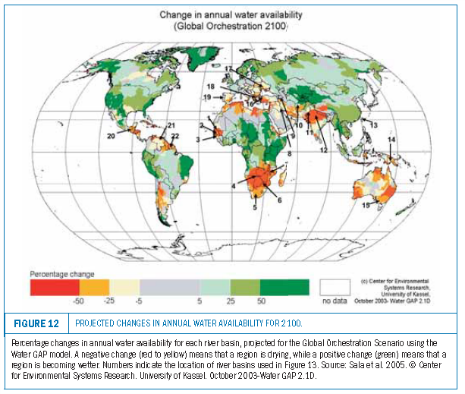Is the Future of Biodiversity All About Biodiversity Loss?
We are faced with the greatest challenges of immediate conservation of our ebbing biodiversity and, resiliency if not reduction of the impacts of climate change. What could be worse than species extinctions, habitat loss, altered species distribution, increasing temperature, drought, floods, diseases? What is the future of biodiversity? Certainly we don’t want things to get worse than they are now.
Visualizing the perils of where we currently are, compounded with time, can be very useful to move us to persevere towards saving our biodiversity. Looking around, reports reveal to us about the irreversible effects of human-caused disturbances to biodiversity and, how these changes happened in a much faster and more extensive way in the last 50 years1.

This information is now part of history. What we have in the present are consequences of the past. If we apply these “lessons” into good use, then we have available data that enable us to see projections of what can be in the future. This is with the hope that, if we choose to take massive conservation actions today, the negative projections can be replaced with a better reality of tomorrow.
The next section demonstrates 3 biodiversity projection studies that resulted from various combinations of observed trends, models and experiments to determine future trends.
1) Declining Terrestrial Biodiversity Species by 2050

A consistent projected scenario of a decrease in global biodiversity is identified by the Organization for Economic Co-operation and Development (OECD). The mean species abundance (MSA) measures how much an ecosystem resembles its natural state. Having an MSA of 100% means that biodiversity resembles the natural state. Having 0% or -7% means that no original species are found in the ecosystem.
The graph shows a projection of continuous decline of terrestrial species, looking at the World graph, from 68% in 2010 going down to 60% in 2050. And yet, these projections are considered conservative for not factoring in the potential impacts of exceeding ecosystem thresholds and dispersion of invasive alien species on account of climate change.
2) Continued Marine Biodiversity Loss

Marine biodiversity projections forecast a continuing marine biodiversity loss due to overfishing. This is in response to increasing fishing pressures demanded by the growing human population and preference for fish as food. The graphs show an increase in fish landings despite of biodiversity loss in the marine ecosystems.
A big problem faced by many marine regions today, is the decline in the marine trophic index and vanishing of large-bodied fish, whether pelagic or demersal. It means that even fishes in the top-predator categories are being exploited resulting in serious disruptions of the marine food chain. This phenomenon is better known as “fishing down the food web”.

Because of the rising temperature in the ocean, marine species are forced to find new locations in the marine waters where they can live. In doing so, their native distributions are disrupted as well. It negatively results to local extinctions and species invasions. Such phenomena have large effects on the future of biodiversity, especially on food webs and alteration of species composition within ecosystems.
3) Decreased Freshwater Biodiversity

Projections in freshwater biodiversity, show about 15% decline from rivers around the world. The decline is a result of decreased runoff caused by climate change while there is increased water consumption by humans.
Overall, the decline of freshwater species is apparent. The freshwater ecosystem is highly vulnerable to environmental changes. Thus, all other threats, including pollution, entry of invasive species, human-related disturbances such as domestic use and constructions of dam contribute in every way to its deterioration. Freshwater fishes lose their habitat and are easily affected by modern developments.
Note: There’s a caveat with this prediction on freshwater biodiversity and must be used with caution. True extinction rates were not used and, other stressors on freshwater fish like pollution and breaking down of rivers were not considered.
Why biodiversity projections are important
These projections or future scenarios were made possible by adding into picture the different causes of change in biodiversity. They help us gain better scientific understanding of biodiversity by enabling us to recognize patterns, processes and responses that we wouldn’t have otherwise seen without visualization through models. By having an awareness of different possible scenarios, we can be prepared to address each one. They allow us to see through the varying feedback mechanisms of biodiversity as they respond to our current trends and practices today. The results have been an awakening not only to scientists and managers, but to all of us. These future scenarios help guide our authorities in creating policies that would support biodiversity.
If the future of biodiversity seems to be a continuing decline, what now?
In conclusion, there are only two certainties that will make these projections real in the future. One, if we don’t change at all and just continue with all the exploitation of biodiversity resources (“business as usual”), and two, if we don’t change for good. We urgently need to think and act for biodiversity protection, conservation and management.
If we let species loss and destructive practices outweigh all our efforts to save biodiversity, the next generation are the ones to suffer all the perils of what we’ve left them. That isn’t a promising future. In our current situation, there will be consequences both for our actions, and inactions. However, the future of biodiversity lies still in our hands. There’s still hope for positive change in the coming years and decades. Let’s find out what we can contribute to help and start today.
“The difference between what we do and what we are capable of doing would suffice to solve most of the world’s problem.” Mahatma Gandhi
Reference:

